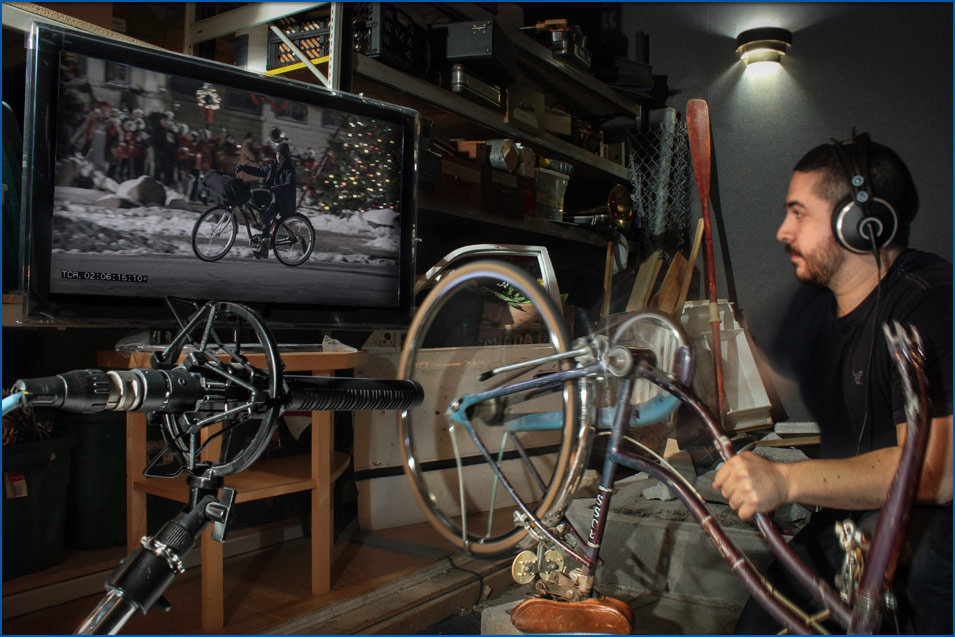For decades, it’s been understood that home theater without a subwoofer simply isn’t home theater. Ever since that Tyrannosaurus Rex put his foot down in Jurassic Park, we’ve wanted to feel the thunderous bass that comes from a depth defying home theater subwoofer. But there is more, far more, to movie soundtracks and home theater than just LFE bass.
In order for this article to make any sense, please read Are you Sub-Conscious – Part 1 in which I discuss the basic foundations for the musical necessity for a proper sub-bass system. In this second part I will build upon this principle to include movie soundtracks and high performance home theater systems.
First, allow me to start with a joke:
Q: What do you call 5 subwoofers in a home theater system?
A: A Great Start!!
At this point you’re probably thinking that I have lost my mind. Well, perhaps you’re not sub-conscious.
What do I mean by that?
Being sub-conscious means that you are aware of, and seeking to re-create, the subharmonic information that is critical to recreating the live feel of instruments and sounds in any movie soundtrack or musical recording.
In movies, 98% of all the sound you hear was added in after-the-fact. That we are rarely aware of this – that the sound appears to effortlessly represent what our eyes see onscreen – is a testimony to the skill of highly qualified sound editors and mixers. Part of this added-in sound is in low bass frequencies. As we discussed in the previous article, low bass frequencies can tell us a lot about not only the instruments we hear, but also the space we are in.
First let’s talk a little about the basic home theater setup.
Did you know that most mixing and transfer studios operate in 5.1 exclusively? Why? Because it’s the purest, hardest thing to get right. To layer on more channels and more pizazz would distract most listeners. Their job is to do service to the original movie, to the director’s intent just as with dedicated music recording engineers.
But what about 6.1, 7.1, 9.1 surround sound, and Dolby Atmos with up to 32 channels? We’ll address those sound formats in another article. For now let’s dial in on the perfect 5.1 channel surround sound home theater setup.
iTUR sets the standard for professional mixing studios. The original home theater Dolby Digital soundtrack called for 5 identical main theater speakers. Each speaker needs to be capable of producing 20 Hz FLAT up to 20 KHz and at an average output of 105 DbA. This is a big deal since there are few consumer home theater speakers under $200,000 that can even meet that specification.
LFE (Low Frequency Effects) Channel
Once the 5 channel surround sound was established and each speaker had its’ own soundtrack, sound editors started to push the boundaries of what these channels could do. The LFE channel was later added to support the main channels. This is the “.1” in a 5.1 surround sound system indicating the lower 10% of the audio frequency range.
The LFE channel was designed as a help channel for the 5 main speakers. The LFE channel has a range from 3 Hz (not a typo) to 120 Hz. Anytime a low bass frequency was played, if the volume exceeded the limits of the main speakers, that sound would also get pushed to the LFE channel for help. This would then be played back by a subwoofer.
The LFE channel provides non-essential low frequency content. The reproduction of this channel is not essential to enjoyment of the program… This leads to the most important recommendation: DO NOT RECORD ESSENTIAL STORY-TELLING SOUND CONTENT IN THE LFE CHANNEL.
High Performance Home Theater Done Right
Ok, so they have 5 really big main speakers–but I can’t do that. I don’t have the floorspace and I don’t have $200,000 lying around. You may not, but the similarities to doing it properly in high end stereo and high performance home theater are striking. Both seek to create the purest, most natural delivery of sound for their respective mediums.
By using a REL subwoofer we can turn your home theater speakers into something much more like the full range bass those massive pro speakers deliver. And this is important because, as we discussed in our previous article, without true full range sound music (and sound) simply does not sound real. Only a REL subwoofer can recreate the sub harmonic frequencies present in live surround sound recordings.
It’s not about bass, it’s about space.
Hollywood calls this room tone. When shooting on a set, the sound tech will hold a microphone into the air, call for quiet on the set, and record…nothing. Even though we don’t “hear” what he is recording, it is necessary to recreate the space the actors are performing in. This room tone gets played back with any sound effects or dialogue that gets added to the final surround sound mix.
Since most of these sounds are quiet, they never get diverted to the LFE channel. The only reason a bass frequency would go the the subwoofer is because it is too loud for the home theater speaker to handle. And because most home theater speakers are not truly capable of full range sound the information gets lost. High performance home theater demands the use of REL home theater subwoofers.
Take the movie Gladiator as an example. When Russell Crowe is in a snowy forest in freezing temperatures telling his men to keep their scabbards warm so their “blades don’t stick” – you have to believe the cold or it wouldn’t make sense. He repeats most of his lines in an ADR booth in Hollywood, CA sometime later in the summer. The sub harmonics of this wintery forrest need to be played back with his voice to keep him in the scene.
Time to dive deep and learn how to do high performance home theater the right way.
Here are some tips to improve your home theater or surround sound system with the use of REL subwoofers:
- When using a REL subwoofer, set your main home theater speakers to large. This will give them to receive a full range signal and allow your REL subwoofer to extend them to the lowest bass frequencies available.
- Subwoofer placement can be tricky and finding the best position in your home theater system usually requires testing. In general, subwoofers love corners as they are mother nature’s little amplifiers. So find an unused corner in your home theater and start by placing your REL subwoofer there.
- Use a REL subwoofer for your front home theater speakers. Then use another REL subwoofer for your surround sound speakers. This will go miles to creating a truly immersive home theater experience. One REL subwoofer up front will give you depth of stage and dimension out the front. The rear REL subwoofer will include that same depth of stage in the back of your home theater. The difference goes from watching a movie to being IN the movie.
- Connect both your front and rear REL subwoofers to LFE. Place them in opposing corners of your home theater. This will make for fast and articulate expression of the LFE, or subwoofer, channel. You will feel the attack and pressure of the LFE channel without getting a sense of where it is coming from.
- Add a 3rd REL subwoofer to your home theater system for the center channel speaker. You have never heard great dialogue unless you’ve heard it with a REL subwoofer. The center REL subwoofer also aids to tie the center channel into your front stereo speakers. This allows for objects to seamlessly move around the front of your home theater.
- 1+1=5. Make use of stereo REL subwoofers to greatly expand your sound stage in your home theater or stereo system. (e.g. use one subwoofer for the left speaker and one subwoofer for the right speaker). Do this and you will understand the math that stereo subwoofers far exceed the sum of their parts)



